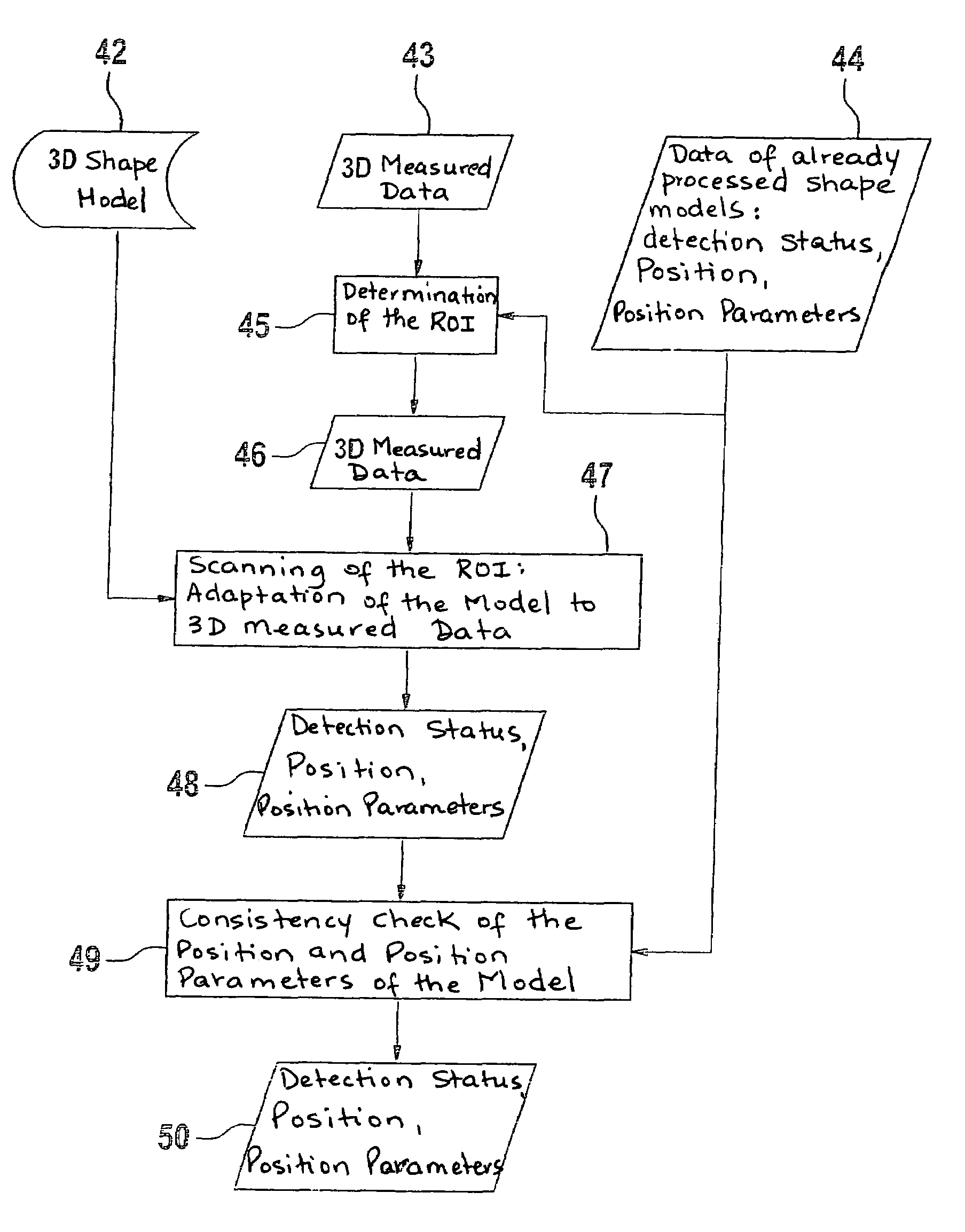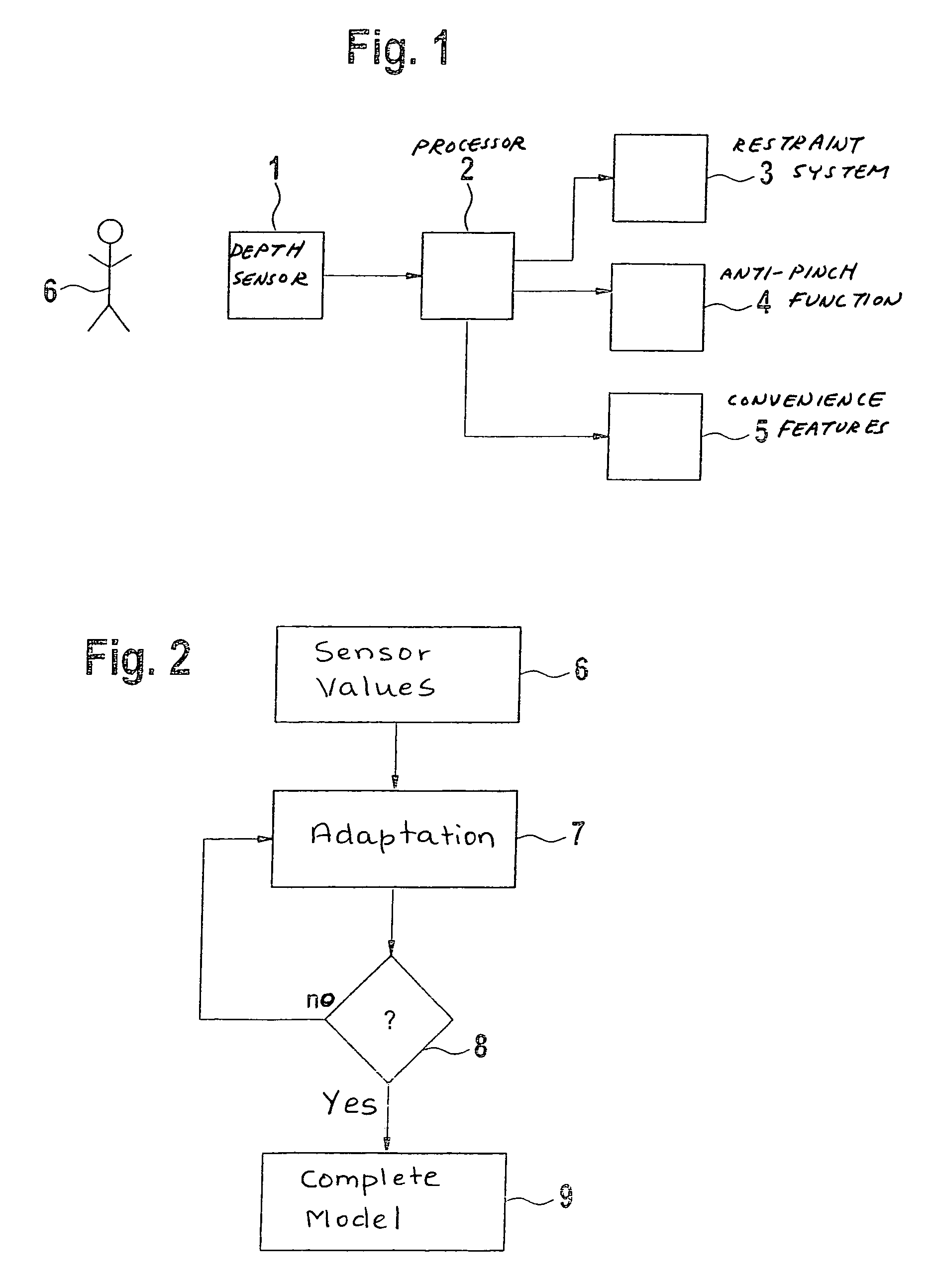Method for detecting a person in a space
a space and person technology, applied in the field of space and person detection, can solve the problems of poor detection performance of model-free approaches, not all situations (such as poses or clothing) can be covered in training,
- Summary
- Abstract
- Description
- Claims
- Application Information
AI Technical Summary
Problems solved by technology
Method used
Image
Examples
Embodiment Construction
[0023]Systems for sensing the passenger compartment of a motor vehicle are based on very different physical measuring principles. For example, it is possible to use a weight mat here; the pressure profile being used to determine whether the seat is empty or occupied. Alternatively, it is possible to carry out a classification. However, the sensor systems relevant to the method according to the present invention are depth-measuring sensor systems. Here, the distance-measuring matrix sensor, for example, takes the form of an image pickup. Such an image pickup may be a video sensor, a radar sensor, an ultrasound sensor, or a multi-camera system. In this connection, it is possible to use different measuring principles: the transit-time principle, the phase-measuring principle, the principle of structured lighting, and the laser scanner principle.
[0024]The spatial data of the depth sensor, which generally takes the form of a matrix sensor and produces more than a hundred measured values ...
PUM
 Login to View More
Login to View More Abstract
Description
Claims
Application Information
 Login to View More
Login to View More - R&D
- Intellectual Property
- Life Sciences
- Materials
- Tech Scout
- Unparalleled Data Quality
- Higher Quality Content
- 60% Fewer Hallucinations
Browse by: Latest US Patents, China's latest patents, Technical Efficacy Thesaurus, Application Domain, Technology Topic, Popular Technical Reports.
© 2025 PatSnap. All rights reserved.Legal|Privacy policy|Modern Slavery Act Transparency Statement|Sitemap|About US| Contact US: help@patsnap.com



